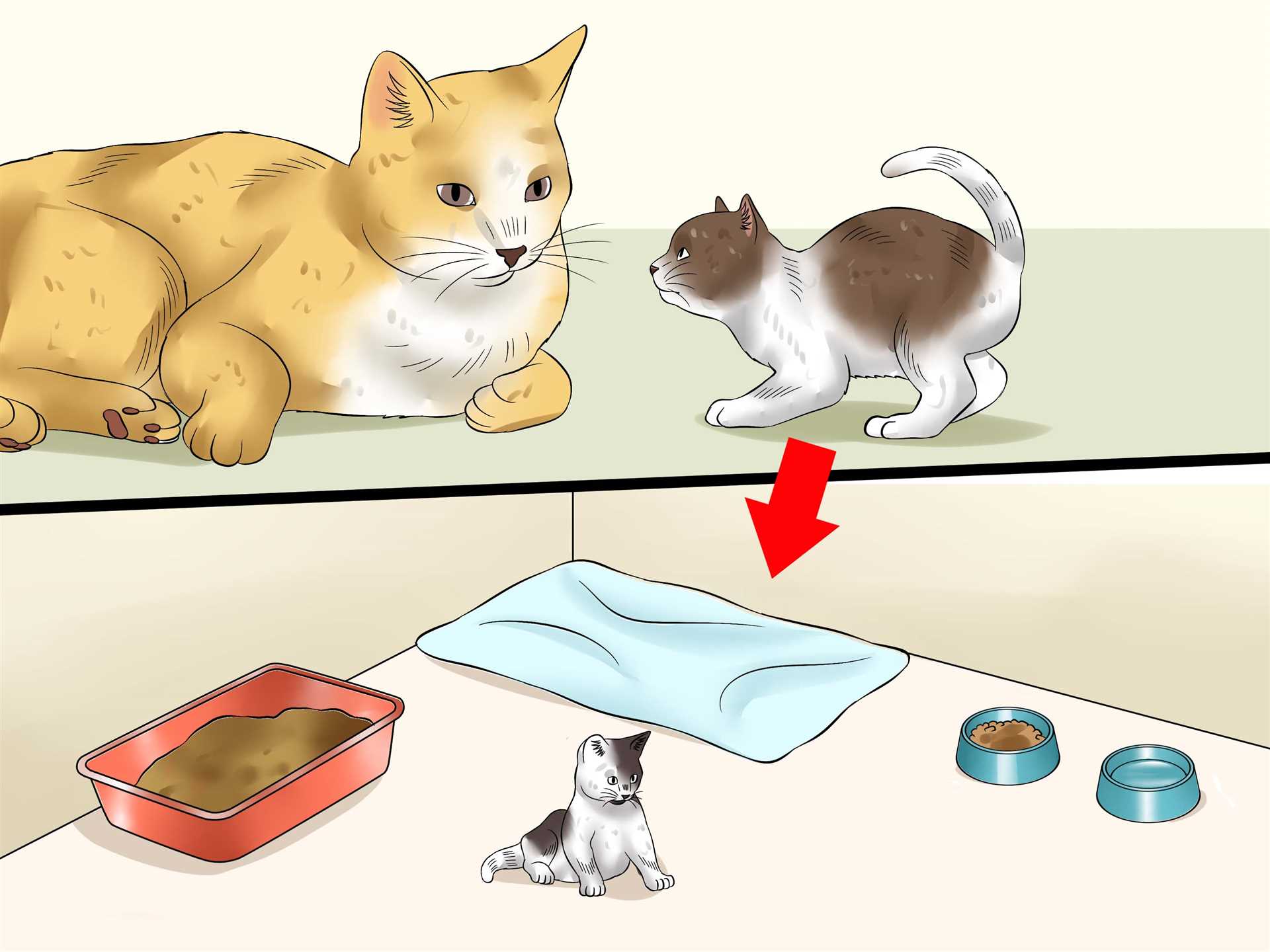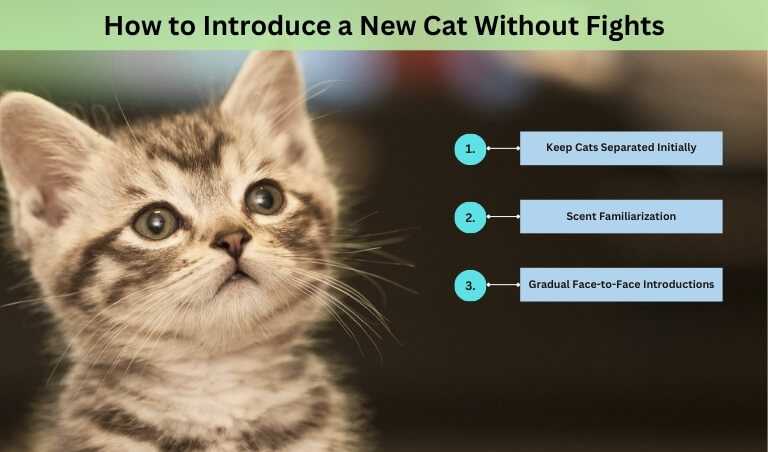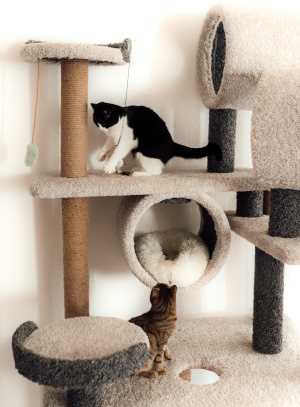

For a smooth introduction, a minimum of 7 to 14 days is recommended for isolating unfamiliar felines. This timeframe allows both parties to acclimate to the new environment without direct interaction, reducing stress levels and potential conflicts.
During this period, it’s beneficial to provide each of us with our own space, complete with food, water, litter boxes, and cozy resting spots. Rotate playtime and scent swapping through toys or blankets to create familiarity without direct contact.
Once the initial separation phase is complete, gradual introductions should be conducted over several days. Start by allowing brief visual encounters, followed by supervised visits. Always monitor body language to identify signs of stress or aggression, adjusting interactions accordingly.
Patience is key. Depending on individual personalities, the entire process may take weeks or even months. Regularly assess the situation and ensure that both companions feel safe and secure throughout.
Duration of Isolation for Feline Companions

For a smooth introduction, a period of at least two weeks is recommended. This allows both parties to adjust to each other’s presence without direct contact.
Here are some steps to follow during this time:
- Provide separate living spaces with food, water, and litter boxes for each feline.
- Engage in scent swapping by exchanging bedding or toys to help them get accustomed to each other’s scents.
- Utilize a baby gate or cracked door for brief visual introductions while ensuring safety.
- Monitor their reactions and behaviors, noting any signs of stress or aggression.
After the initial two weeks, gradual face-to-face meetings can begin, always supervised. Start with short interactions and progressively increase the duration based on comfort levels.
Continual observation is key. If any stress or hostility arises, revert to the previous stage for additional time before attempting again.
Patience is paramount; every feline is unique, and their adjustment timeline may differ. The goal is a harmonious coexistence, which may take several weeks to achieve.
Understanding the Importance of Separation
It’s advisable to allow a minimum of two weeks for a proper introduction process. This period helps everyone adjust to the presence of another feline. During this time, I want to stress the significance of gradual exposure. It prevents stress and potential conflict, which could disrupt the household harmony.
Establishing distinct spaces for each pet ensures they have safe zones, making the transition smoother. Each cat can explore their environment without feeling threatened, which is vital for their emotional well-being.
During this adjustment phase, utilize scent swapping techniques. By exchanging bedding or toys, you help them become familiar with each other’s scents, reducing anxiety when they finally meet face-to-face.
Monitor their reactions through a barrier, such as a gate or door. This allows for visual contact without direct confrontation, helping to gauge their comfort levels. Positive reinforcement with treats can encourage calm behavior when they see one another.
Pay attention to body language. Signs of tension or aggression, such as hissing or puffing up, indicate that more time apart is necessary. Patience is key; each feline has its own pace for adjusting to changes.
Following these guidelines fosters a more peaceful coexistence. A well-managed introduction can lead to a happy multi-cat household, where each furry friend feels secure and content.
Recommended Separation Duration for Cats
For optimal adjustment, a period of two to four weeks is advisable. This timeframe allows both felines to acclimate to each other’s scents and sounds without direct interaction. Begin with short, supervised meetings after the initial separation period to gauge their reactions.
Signs of Readiness
Observe their behavior closely. If they display relaxed body language–such as slow blinking, purring, or playing–it’s a good indication that they are ready for more interaction. Look for signs of stress, like hissing or growling, which suggest additional time apart may be necessary.
Maintaining a Stress-Free Environment

During this transition, provide separate resources for each feline, including food bowls, litter boxes, and resting areas. Consider high-quality nutrition to support their well-being, like the best food for cats and kittens, to keep them healthy and content. This helps reduce potential stress and promotes a smoother introduction.
Creating a Safe Space for Felines

To ensure comfort for an unfamiliar companion, designate a quiet area away from regular activity. This space should include essential items like a litter box, food and water dishes, and a cozy bed. A separate room with minimal noise will help your new friend acclimate without stress.
Use a few pieces of furniture, like a scratching post and a perch, to encourage exploration. Familiar scents, such as blankets or toys from their previous home, can ease anxiety. This will make the environment feel welcoming and secure.
During initial interactions, allow visual contact through a cracked door or a gate. This method creates a sense of safety while letting both parties observe each other. Gradually extend these interactions as comfort grows.
Maintain a calm atmosphere by minimizing loud sounds, sudden movements, and visitor traffic. Soft music or white noise can help soothe nerves. Regularly check on the newcomer to ensure they’re settling in well, but respect their space.
Lastly, monitor their behavior. Signs of stress may include hiding, excessive grooming, or hissing. If these occur, reassess the environment and adjust as needed to promote a more relaxed atmosphere.
Monitoring Interactions Between Felines
Observe the behaviors of the kitties closely during their initial meetings. Start with short interactions and gradually increase the time as comfort levels rise. Use a safe barrier, like a baby gate, to facilitate visual engagement without direct contact. This allows both of us to explore each other’s presence without feeling threatened.
Look out for signs of stress or aggression, such as hissing, growling, or swatting. If such behaviors arise, it’s best to separate them immediately and give it more time before reintroducing. Create positive associations through treats or toys during these interactions to encourage friendly behavior.
Document any notable reactions or changes in behavior. Keeping a log can help track progress over days or weeks. If one feline seems to be adjusting better than the other, consider dedicating more one-on-one time to the less confident one to boost their comfort levels.
In addition to monitoring direct interactions, pay attention to indirect signs like eating habits or litter box usage. If either of us shows signs of stress, adjustments may be necessary. Patience is key; sometimes, it takes considerable time to build a harmonious household.
| Behavior | Significance |
|---|---|
| Hissing | Fear or aggression |
| Playful Stance | Interest and potential friendship |
| Avoidance | Need for more space |
| Curiosity | Positive engagement |
For more tips on caring for pets, check out best acana dog food for puppies. It’s essential to ensure that we all feel secure and happy in our shared space.








